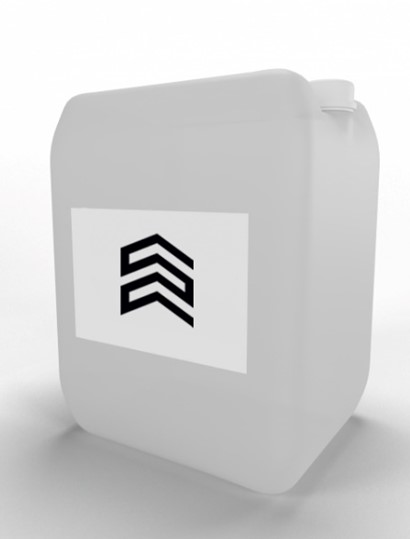The US did not rule out that the EU will lower the price ceiling for Russian oil by $5

 PIONEER MEIZHENG BIO-TECH (5 in1) JC0586 - Antibiotic tests 5 in 1 / Rapid tests for determining the residual amount of β-lactams, tetracyclines and cephalexin in milk, whey
PIONEER MEIZHENG BIO-TECH (5 in1) JC0586 - Antibiotic tests 5 in 1 / Rapid tests for determining the residual amount of β-lactams, tetracyclines and cephalexin in milk, whey PIONEER MEIZHENG BIO-TECH (5 in 1) JC0726 / Rapid tests for determining the residual amount of Bacitracin, ansamycins, clindamycin, spiramycin, florfenicol in milk, whey
PIONEER MEIZHENG BIO-TECH (5 in 1) JC0726 / Rapid tests for determining the residual amount of Bacitracin, ansamycins, clindamycin, spiramycin, florfenicol in milk, whey
US and EU authorities are examining how the price ceiling mechanism for Russian oil products works in March, and the EU may lower it by $5, US Treasury Assistant Secretary for Economic Policy Ben Harris said at the American Enterprise Institute (AEI).
“Europe has committed to testing the marginal price [for oil products from Russia] in March, as informed by the International Energy Agency (IEA),” Harris said.
According to him, Brussels may lower the ceiling by five dollars relative to the market price of Russian oil. “So if the market price is $50, that means a two or three DOLLAR discount. These were European commitments. <...> We are waiting for their assessment from the IEA,” explained the representative of the US Treasury.
He also noted that Washington reserves the right to change the ceiling price "if and when it suits its needs." The limit could be adjusted "if Russia is making too much money or if world markets are not as stable as [the US] would like," Harris said.
Now the Russian brand of EXPORT oil mixture Urals is trading at around $57 per barrel, while Brent is worth about $77 per barrel. Since February 5, after the sanctions on Russian oil came into effect, the price of Urals rose by three dollars, while Brent remained almost unchanged.
Amos Hochstein, senior energy adviser to the President of the United States, said in early March that limiting the price of oil from Russia was "working well." At the same time, BLOOMBERG wrote that for at least four weeks after the imposition of sanctions, Moscow sold oil (Brent) at an average price of $74 per barrel and received much more profit than expected in the West.
The price ceiling of EU and G7 members for Russian oil for deliveries by sea to third countries came into effect on December 5. On February 5, a ban on the supply of Russian oil products to the EU began to operate. The embargo on the supply of petroleum products and the price ceiling stipulated by it do not apply to products that are made from Russian oil abroad, as well as mixtures of Russian fuel with petroleum products from other countries, if they are made on the territory of third countries.
Read pioneerprodukt.by “What can I do differently today?”: The HEAD of Zoom is about self-reflection What will happen to cryptocurrencies after the fall of American banks How entrepreneurs from Russia confirm capital for foreign banks Not a sports car, but recognition: how to understandwhat do you really wantFollowing the imposition of sanctions on Russian oil, President Vladimir Putin signed a decree on retaliatory measures that prohibits the supply of Russian oil and petroleum products to foreign citizens and companies if the contracts "directly or indirectly provide for the use of a price cap mechanism."
Supplies of oil and oil products from Russia to the G7 countries and the EU in 2021 amounted to 214.7 million tons for a total of $109.5 billion. This is 68–70% of the total export of these goods to the world market. Despite this, Russia managed to reorient a significant part of supplies from Europe to Asia, experts noted.
Earlier, the fact that the G7 countries (usa, UK, Germany, France, Italy, CANADA and Japan) may revise the price cap on Russian oil was announced by Elizabeth Rosenberg, assistant to the head of the US Treasury for combating the financing of terrorism and financial crimes. “All I can say is that the G7 plans to reassess the price ceiling in March,” she said in early March.
Read together with it:
- A fire at the Merci Agro Sakhalin pig farm killed 1,500 pigs, but pork production will not be affected.Deputy Minister of Agriculture and Trade of the region Inna Pavlenko noted that other pig farms will help compensate for the loss. Merci Agro Sakhalin plans to restore its capacity and livestock, which will help avoid a pork shortage on the local market. The restoration will be funded by insurance payments, and veterinarians have already analyzed the condition of the remaining animals and determin...
- The IEA sees a risk of a decline in oil production in Russia due to sanctions.The IEA sees a risk of reduced oil production in RUSSIA due to US sanctions , but maintains its production forecast. According to the IEA, Russian oil exports will remain unchanged.There is a "significant downside risk" to Russia's oil production forecast due to US sanctions, the International Energy Agency (IEA) said in a report.BLOOMBERG . The agency's experts believe that the latest US sanction...
- UniCredit заявил о галактических усилиях из-за санкций против РоссииUniCredit старается не нарушить «более 15 тыс. санкций», а также не «совершать ошибки», которые позволят изъять его активы в России, заявил гендиректор. После начала военной операции банк начал рассматривать возможность ухода Итальянский банк UniCredit прилагает «галактические усилия», пытаясь соблюсти международные санкции в отношении своего российского подразделения. Об этом заявил генеральный д...


























































